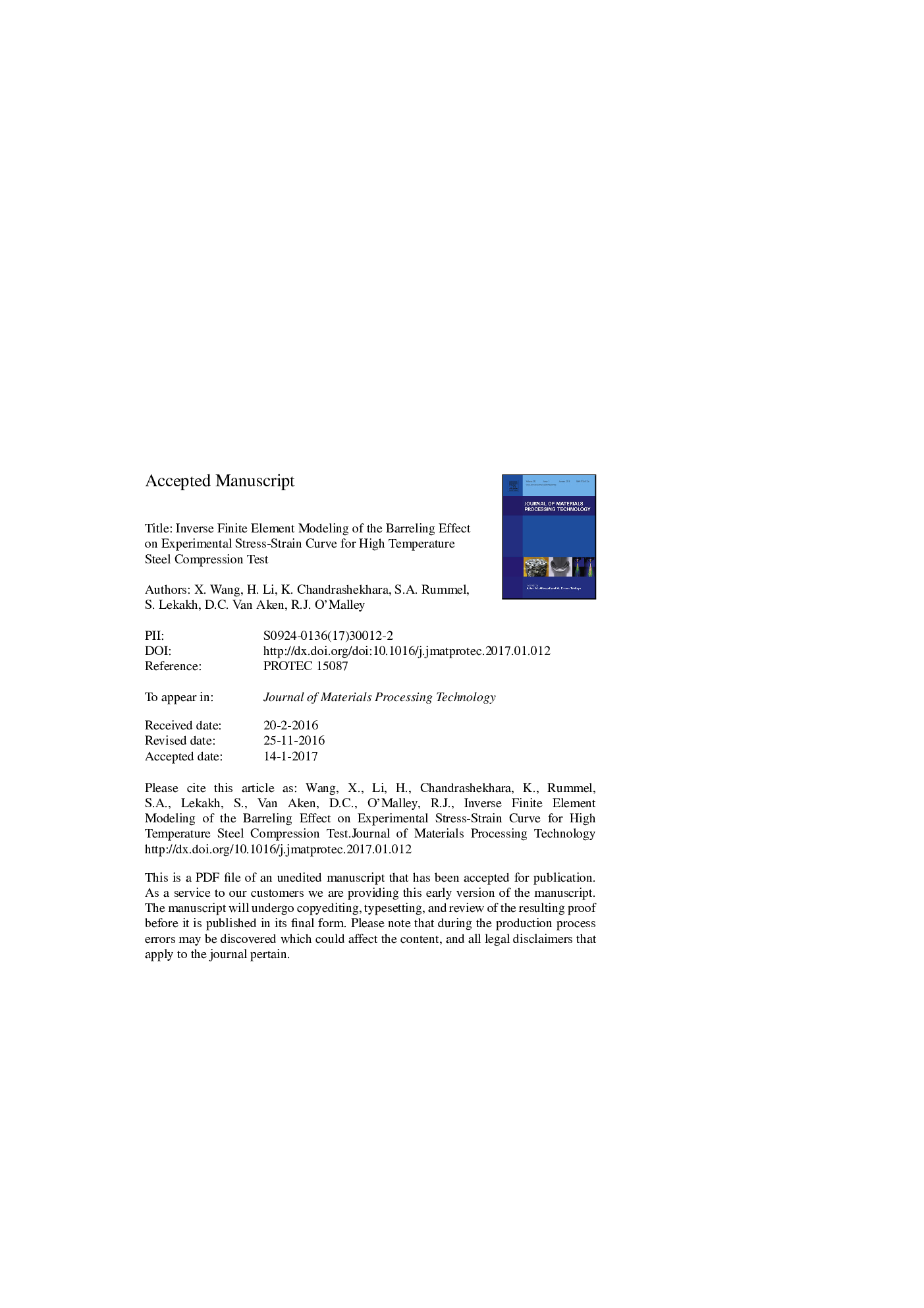| کد مقاله | کد نشریه | سال انتشار | مقاله انگلیسی | نسخه تمام متن |
|---|---|---|---|---|
| 5017952 | 1466724 | 2017 | 24 صفحه PDF | دانلود رایگان |
عنوان انگلیسی مقاله ISI
Inverse finite element modeling of the barreling effect on experimental stress-strain curve for high temperature steel compression test
ترجمه فارسی عنوان
مدلسازی عنصر محدود عنصری اثر بارلینگ بر روی منحنی فشار کششی آزمایش شده برای آزمون فشرده سازی فولاد با درجه حرارت بالا
دانلود مقاله + سفارش ترجمه
دانلود مقاله ISI انگلیسی
رایگان برای ایرانیان
کلمات کلیدی
موضوعات مرتبط
مهندسی و علوم پایه
سایر رشته های مهندسی
مهندسی صنعتی و تولید
چکیده انگلیسی
Thermomechanical properties used in the modeling of steel forming processes that are determined using high temperature cylindrical coupon compression testing are subject to errors due to barreling of the test specimen. Barreling caused by the friction between specimen and platens reduces the accuracy of the mechanical property determination. In this study, Gleeble hot compression testing was conducted to investigate material behavior for a low carbon structural steel over a range of temperatures (from 900 °C to 1200 °C) and strain rates (from 1 sâ1 to 30 sâ1). An inverse method combined with finite element analysis was developed to correct the experimental stress-strain curves for the observed barreling effect to obtain the actual stress-strain curves for the material. In deformation simulations, the revised stress-strain curves produced barreling shape predictions that agreed well with the barrel shapes observed in experiments. A comprehensive parametric study based on the revised stress-strain curves was performed to study barreling for a range of friction coefficients, temperatures, and strain rates. Results showed that the magnitude of barreling increases with increasing friction coefficient. For a specific friction coefficient, the magnitude of the barreling decreases with increasing temperature and varies non-linearly with strain rate.
ناشر
Database: Elsevier - ScienceDirect (ساینس دایرکت)
Journal: Journal of Materials Processing Technology - Volume 243, May 2017, Pages 465-473
Journal: Journal of Materials Processing Technology - Volume 243, May 2017, Pages 465-473
نویسندگان
X. Wang, H. Li, K. Chandrashekhara, S.A. Rummel, S. Lekakh, D.C. Van Aken, R.J. O'Malley,
